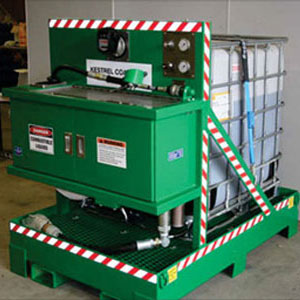Oil Sampling Points & Sampling Dipstick Caps
Oil Sampling Points
Enhanced operational efficiencies and improved availability of both fixed and mobile plant are placing increasing pressure on plant maintenance programs. The contribution that regular and frequent sampling of lubrication materials makes to improved maintenance programs is becoming more and more recognised as maintenance crews seek to better gauge operational conditions and predict plant failures.
For oil sampling to be effective there are several fundamental principles that must be adhered to:
- The sample must be a true representative sample of the oil in the compartment.
- The oil must be agitated to ensure that particles are suspended throughout the oil.
- The sample must be taken from the same point or depth in the compartment each time.
- Circulation systems should be sampled on the return line or after the pump prior to filtration.
- All efforts should be taken to ensure that the sampling process does not introduce further contaminants to the reservoir.
- All efforts must be made to ensure the sample it self is not contaminated.

Figure 1 – Correct installation of Sampling Point
In order to manage the risk of contaminate inclusion in oil samples and oil filled compartments, a range of Sampling Points are available for use in both oil filled compartments, such as conveyor drives, and oil circulation systems.
Correctly installed Sampling Points ensure that:
- The sample is taken from the same point each time.
- The oil is extracted from the same depth in the compartment each time.
- Dirt and other contaminants are kept clear of the entry point of the sample tube.
- Contamination associated with dipstick removal is reduced.
- Sampling occurs quickly and easily.
Correct installation of Sampling Points in a location that facilitates ready access to lubrication reservoirs enhances operational efficiencies and improves occupational health and safety protocols.
Sampling Points are small and unobtrusive and can be located in accessible locations as demonstrated in Figure 2.
The dust cover, illustrated in Figure 3, which is integrated into the Sampling Point design ensures that contaminant ingress during sampling is eliminated.

Figure 3 - Integrated Dust Cover

Figure 2 - Sampling Point Gearbox Installation
Lubricant sampling is undertaken by inserting a sample tube into the Sampling Point and withdrawing a sample for subsequent analysis. The sampling tube arrangement is demonstrated in Figure 4.
The lubricant sampling procedure is demonstrated in Figure 5.

Figure 5 - Lubricant Sampling Procedure

Figure 4 - Sampling Tube Installation
For more information related to Sampling Points contact Mark Drayton at Integrated Reliability Solutions on 0438000624.
Oil Sampling / Dipstick - Reservoir Cap











